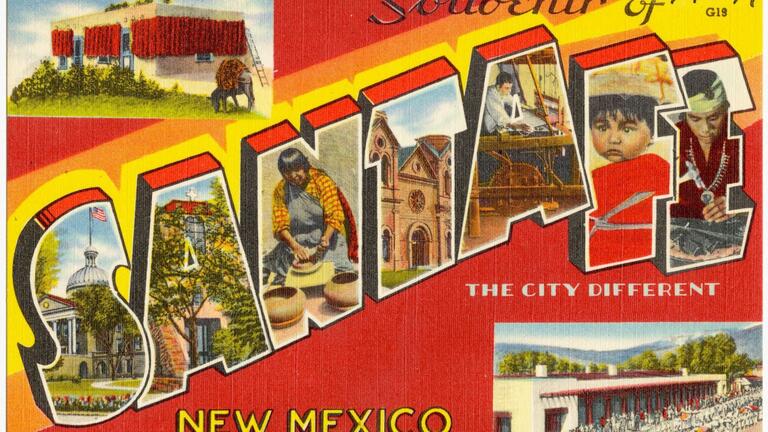American Regions & Regionalism: An Architectural History of Place, Time and Culture
This course examines the ways in which the interactions and intersections of place, time and culture have created distinctive regional patterns. We will primarily focus on the periods before the 20th century, when the forces of vernacular traditions were stronger, but we will also make forays into more recent trends of regionalism as an aesthetic choice, a theoretical stance, and an intentional place-making device.

Souvenir postcard of Santa Fe, New Mexico.
Despite the homogenizing forces of mass culture and globalization, distinctive regional mosaics of landscape and architecture are still evident across the U.S. If one says “New England,” the vestiges of Puritan village greens with framed white churches may come to mind. “The Southwest” may conjure Native American adobe pueblos or turquoise painted trim. The built environment reflects particular regional identities that have been both unconsciously and consciously created over time. We will examine the ways in which the interactions and intersections of place, time and culture have created distinctive regional patterns. We will investigate how and why a region’s architectural identity evolved in the ways that it did. We will primarily focus on the periods before the 20th century, when the forces of vernacular traditions were stronger, but we will also make forays into more recent trends of regionalism as an aesthetic choice, a theoretical stance, and an intentional place-making device.